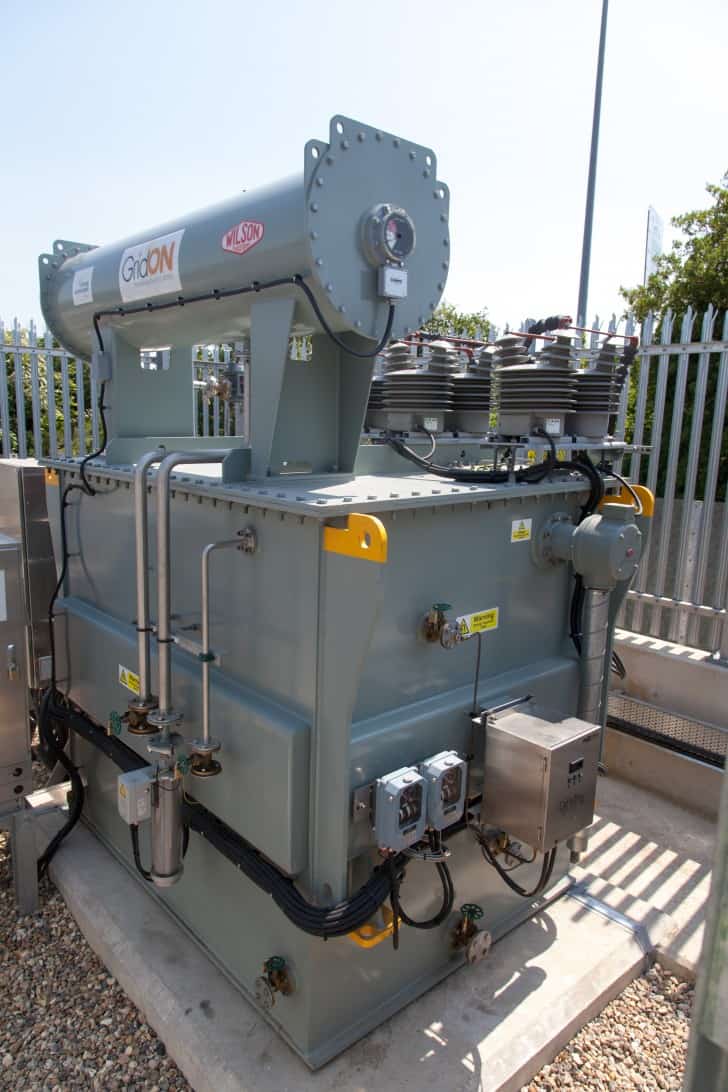Following three and a half years of successful experience in live operation, GridON and Wilson Transformer Company are announcing a new family of cost-effective Fault Current Limiters (FCL-DG) with smaller footprint for mid-to-high voltage applications.
GridON’s established technology has been further enhanced to offer a cost-effective solution for distribution grid operators, industrial customers and independent power producers.
Growing demand for connecting Distributed Generation (DG) sources has been causing major challenges – in particular mitigation of additional fault current introduced with DG connection.
Network operators will not authorise DG connection without proven means for protecting the network from excessive fault currents levels.
Independent Power Producers (IPP) are often required to make significant capital and resource investments in order to reduce fault current exposure, and to be able to connect.
This requirement often translates to postponement of the connection and significant incurred costs. In some cases, where DG is over-subscribed, it may not be possible for a new IPP to connect at all.
GridON in partnership with Wilson Transformer Company are offering a cost-effective solution for expanding decentralised generation sources.
GridON and Wilson Transformer Company offer a breakthrough Fault Current Limiter for network operators, power producers and industrial customers.
By suppressing excessive fault currents, GridON’s FCLs enable increased supply by cost-effective network meshing and connection of power generation and renewable energy sources. The FCL improves grid resilience and reliability and significantly lowers capital expenditures and operating costs.
Independent Power Producers are now able to apply this novel FCL-DG for cost effective and reliable connection of decentralised energy sources, while controlling their prospective fault currents. The FCL-DG will expedite connection time and reduce costs.
The FCL-DG instantly suppresses excessive current and recovers to normal load rapidly upon fault clearance – being always ready for consecutive short circuit events. The FCL-DG is reliable and robust, and very easy to install and maintain.
The patented design concept has been extensively simulated on ANSYS Maxwell 3D software to evaluate its variable impedance under normal load and fault conditions. System X/R ratio is an important input.
Network load flow simulations are separately performed for fault scenarios in different parts of the network with and without the FCL. Impact of FCLs on system protection and major system components is thoroughly assessed prior to an FCL installation.
Lightning Impulse, thermal and dynamic short-circuit strength of the FCL is further analysed using standard power transformer FEM software.
Various prototype and commercial FCLs manufactured so far have been rigorously tested in the transformer factory and a certified short circuit test laboratory, with multiple fault conditions and fault levels with maximum asymmetry.
Field results, laboratory results and design simulations have shown good correlation amongst themselves.
Decentralised Generation example:
Typical distributed generation source (like gas and wind) is being connected to 11-33kV grids. Following is an example of a 20MVA gas generation plant, connecting to a 33kV distribution network.
The prospective fault current from the independent power producer side may reach 1,500A, while the network operator’s requirement is keeping additional fault current under 600A at all times. An FCL installed in the feeder connection to the network will guarantee that all fault currents will be limited under 600A level.
This partner content is brought to you by Wilson Transformer Company. For more information about FCL and other products, visit www.wtc.com.au.















